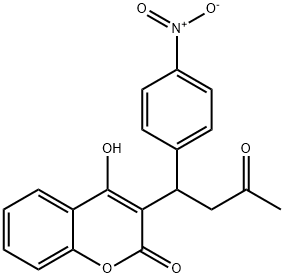Potentially hazardous interactions with other drugs There are many significant interactions with
coumarins. Prescribe with care with regard to the
following:
Anticoagulant effect enhanced by: alcohol,
amiodarone, anabolic steroids, aspirin, aztreonam,
bicalutamide, cephalosporins, chloramphenicol,
cimetidine, ciprofloxacin, fibrates, clopidogrel,
cranberry juice, danazol, dipyridamole, disulfiram,
dronedarone, esomeprazole, ezetimibe, fibrates,
fluconazole, flutamide, fluvastatin, grapefruit juice,
itraconazole, ketoconazole, levamisole, levofloxacin,
macrolides, methylphenidate, metronidazole,
miconazole, nalidixic acid, neomycin, norfloxacin,
NSAIDs, ofloxacin, omeprazole, pantoprazole,
paracetamol, penicillins, propafenone, ritonavir,
rosuvastatin, SSRIs, simvastatin, sulfinpyrazone,
sulphonamides, tamoxifen, testosterone, tetracyclines,
thyroid hormones, tigecycline, toremifene, tramadol,
trimethoprim, valproate, vitamin E, voriconazole.
Anticoagulant effect decreased by: acitretin,
azathioprine, carbamazepine, enteral feeds,
enzalutamide, fosphenytoin, griseofulvin, oral
contraceptives, phenobarbital, phenytoin, primidone,
rifamycins, St John’s wort (avoid), sucralfate, vitamin
K.
Anticoagulant effects enhanced / reduced by: anion
exchange resins, corticosteroids, dietary changes,
efavirenz, fosamprenavir, tricyclics.
Analgesics: increased risk of bleeding with IV
diclofenac and ketorolac - avoid concomitant use.
Anticoagulants: increased risk of haemorrhage with
apixaban, dabigatran, edoxaban and rivaroxaban -
avoid.
Antidiabetic agents: enhanced hypoglycaemic
effect with sulphonylureas also possible changes to
anticoagulant effect.
Ciclosporin: there have been a few reports of altered
anticoagulant effect; decreased ciclosporin levels have
been seen rarely.
Cytotoxics: increased risk of bleeding with erlotinib;
enhanced anticoagulant effect with capecitabine,
etoposide, fluorouracil, ifosfamide, sorafenib and
tegafur; reduced effect with mercaptopurine and
mitotane.



